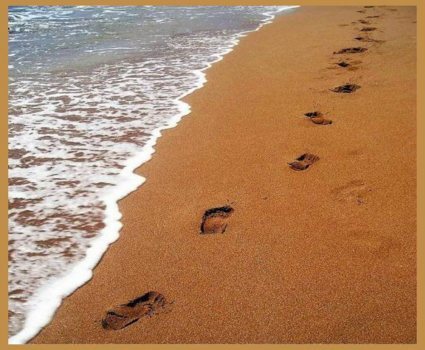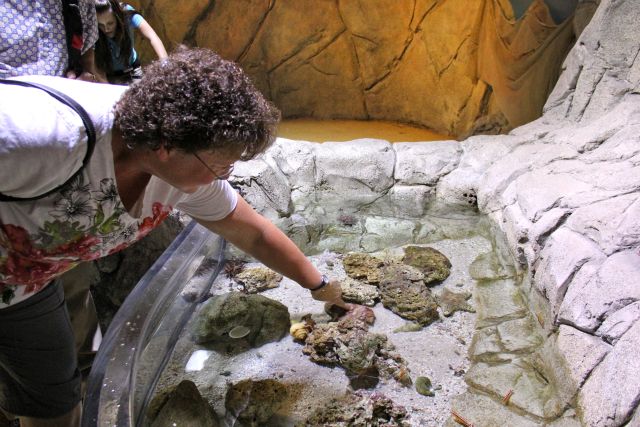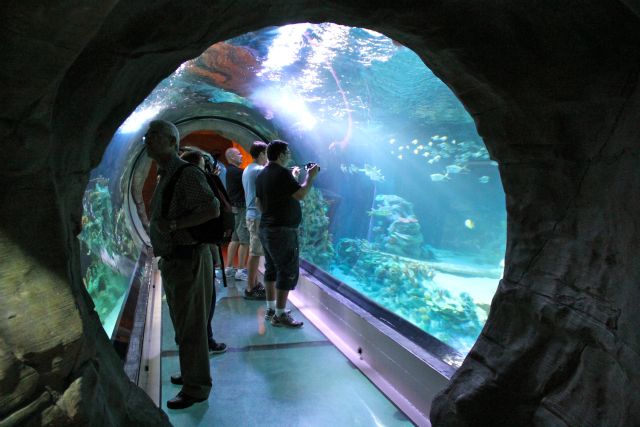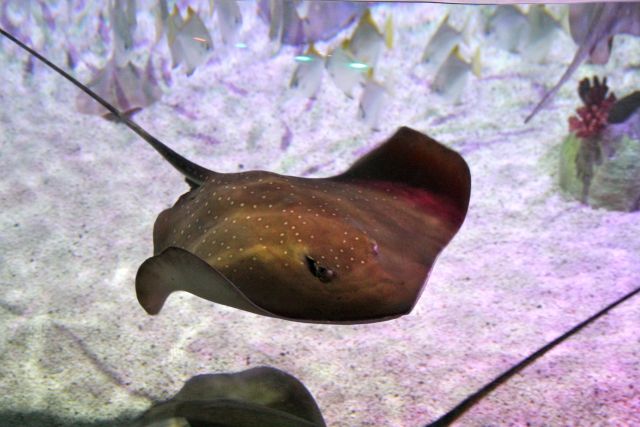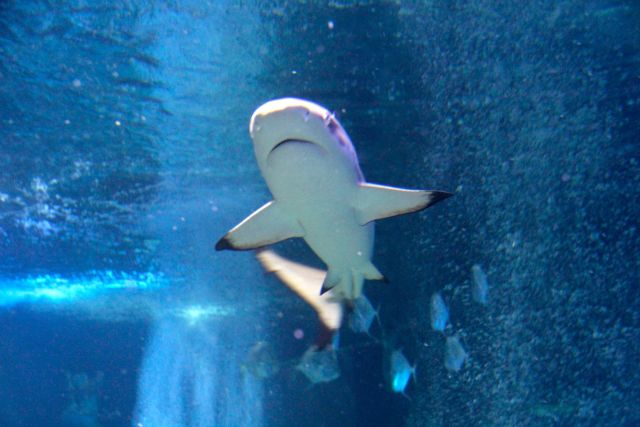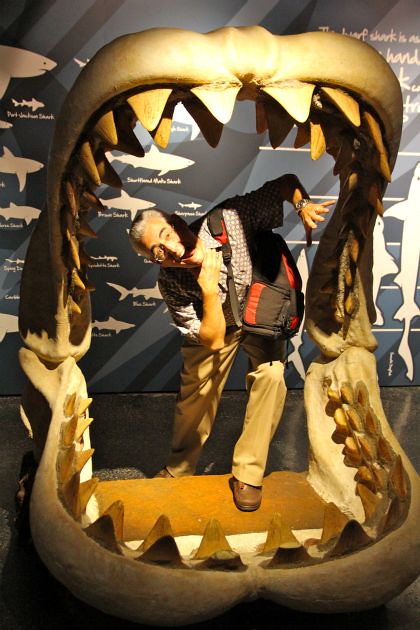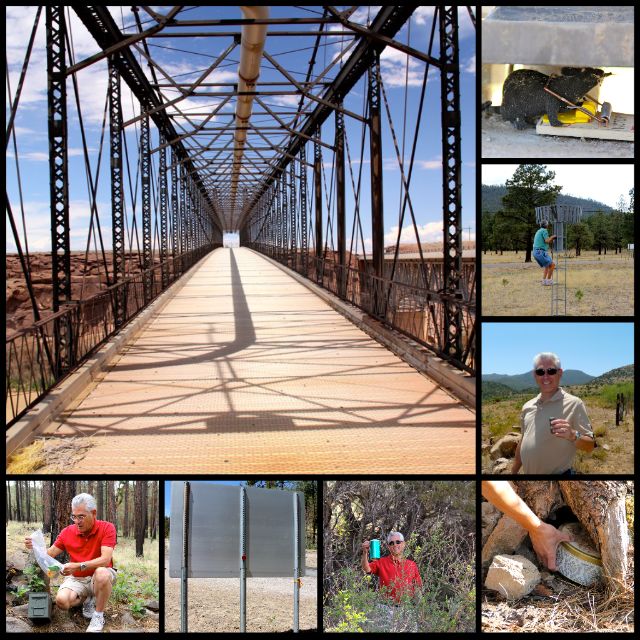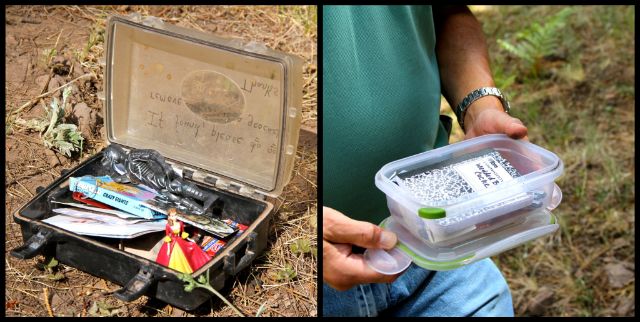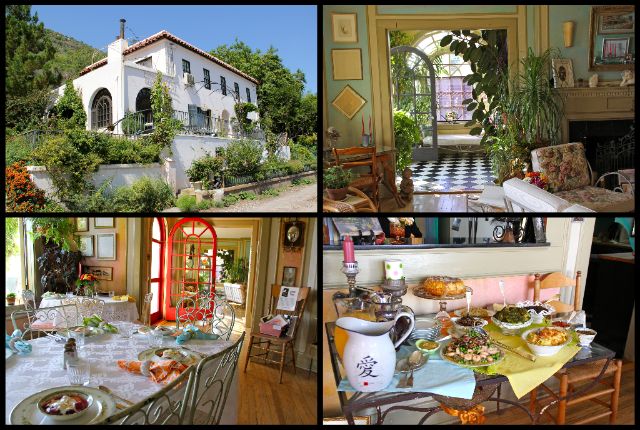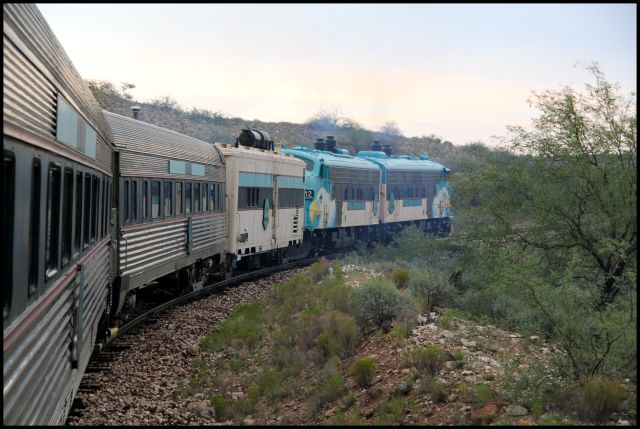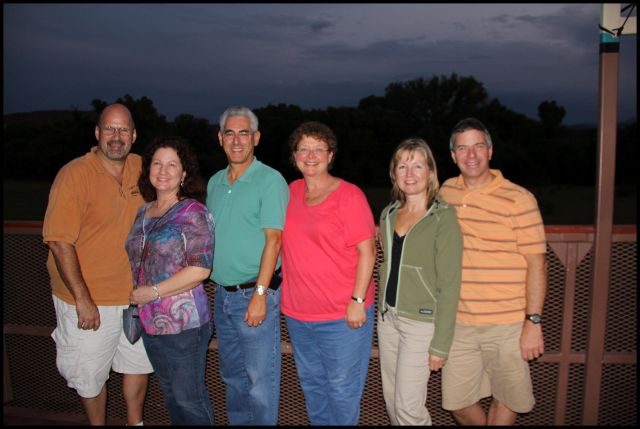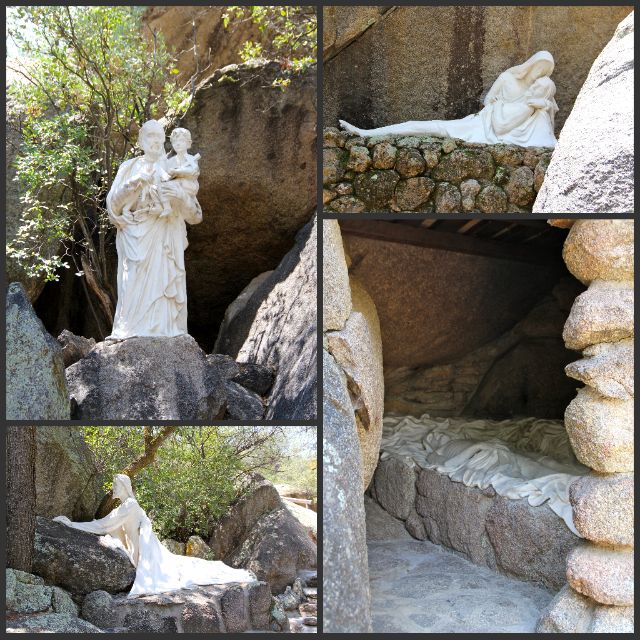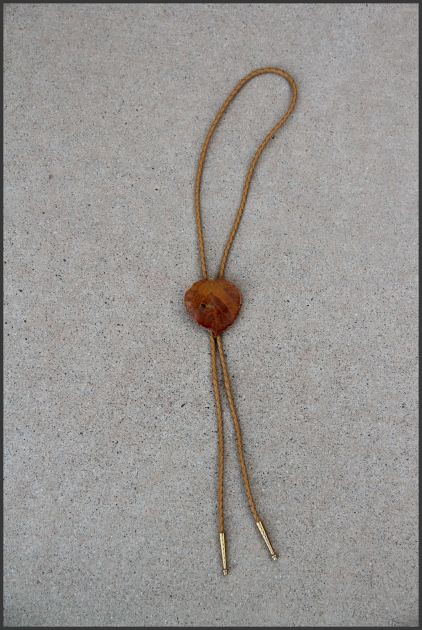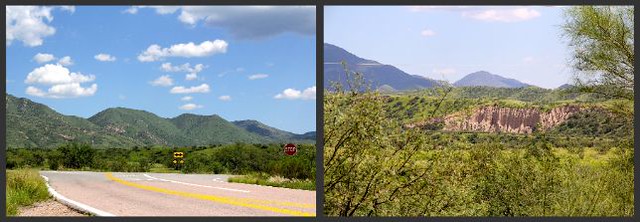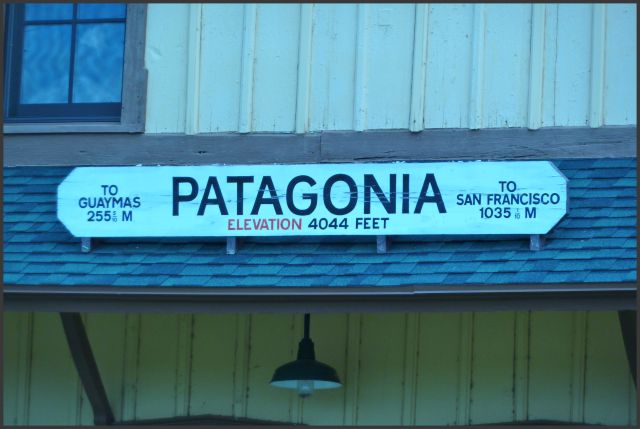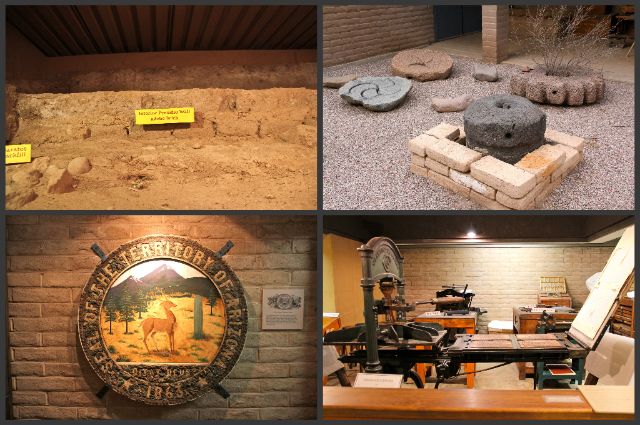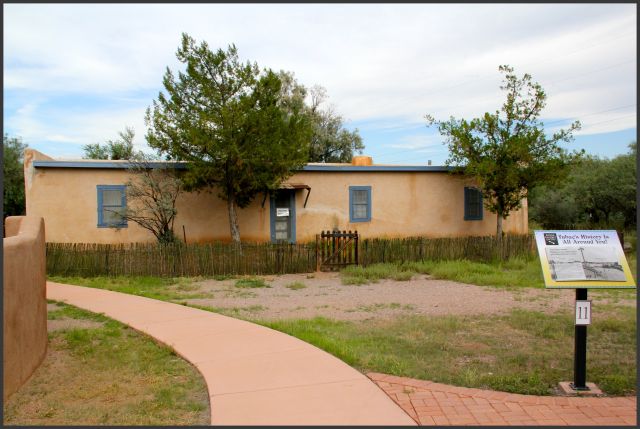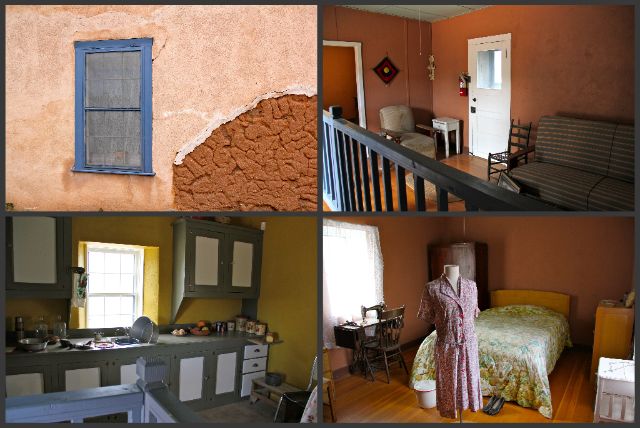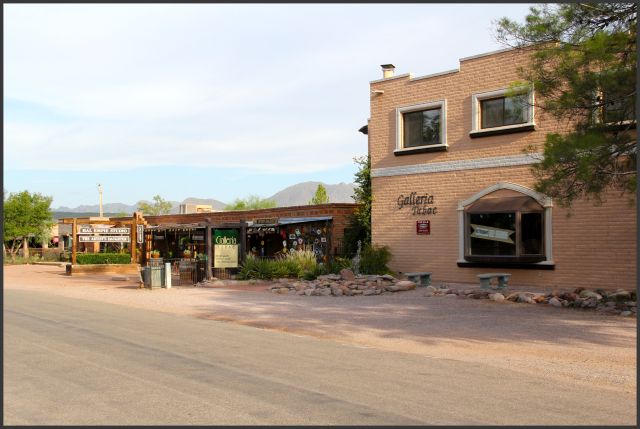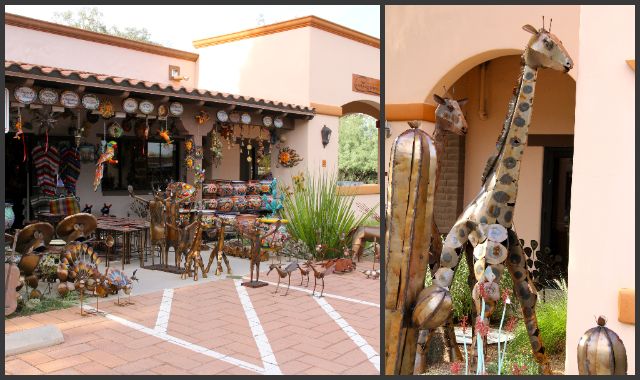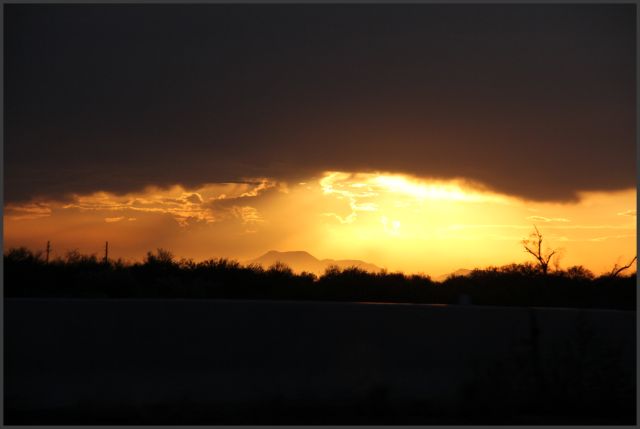We recently headed north to the quaint town of Jerome. There were three purposes to this mini-vacation: to escape the heat in the valley, to spend some time with MR KLUD (along with two other couples, we are
Mike,
Richard,
Kristin,
Laurie,
Ursi and
Doug, or MR KLUD for short!), and to see a few more things on my "
100 Things to See in Arizona" list.
I have been to Jerome many times both as a child and as an adult which is why, even though it was on the list in the article in
The Arizona Republic, I did not include it on my "100 Things" list. Jerome is a tenacious town, hanging on when it just doesn't seem possible. Like most mining towns in Arizona, it had to reinvent itself when the mines closed. Once known as "the wickedest town in the southwest," today it is a family-friendly hamlet built on Cleopatra Hill. Instead of exporting copper and other minerals, today art and wine are Jerome's primary money-makers.
We stayed at a delightful bed & breakfast known as
The Surgeon's House. The United Verde Copper Company built the house (really a mansion) in 1916 for the town's chief surgeon, Dr. Arthur Carlson, and his family. It was just down the hill a bit from the company-built United Verde Hospital which today houses the Jerome Grand Hotel. After the mines closed prominent town's people lived in the Surgeon's House until it eventually fell into disrepair and was then purchased by Andrea Prince who passionately restored it to the beautiful B&B it is today.
Top left: The Surgeon's House B&B
Top right: Common living area and garden room
Bottom left: Dining room
Bottom right: Breakfast buffet
We had an awesome view of the red rocks in Sedona from the front porch.
After spending the day exploring Jerome, it was time for the first item on my list, riding the Verde Canyon Railroad (#77). The train departs from the Clarkdale depot for an adventure through the Verde Canyon as it makes it way along the upper Verde River to Perkinsville.
Two renovated FP7 locomotives pull the newly renovated passenger cars through Verde Canyon. The FP7's were built in 1953 by General Motors for the Alaska Railroad. Today there are only ten FP locomotives in all of North America.
The railroad in parts of Arizona, like many towns, was built because of the mining industry. Mines in Jerome, Clarkdale, and other places in the Verde Valley needed a way to transport ore to smelters and then to bigger cities to trade. Small spurs joined up with major lines ... and when the mines closed, the spurs died.
Today passengers are able to travel the same line that transported ore, equipment and passengers (mining officials) along one of those spurs as it snakes through the high desert. There are three kinds of accommodations on the train: first class has plushly upholstered facing seats, panoramic windows and a Champagne toast at departure, coach has Pullman-style seats and a snack bar offering refreshments, and the exclusive caboose, designed for a private party of six or fewer passengers, has oversized chairs, picture windows and a private outside viewing platform as well as a personal valet to see to your every whim. First-class and coach passengers may pass freely between their car and an open-air car choosing to sit inside or be outside.
We enjoyed our first-class seats but spent a fair amount of time outside in the open-air car as well. Scenery whizzed past us as we were transported back to a more genteel time. Face-to-face conversations replaced texting and observing the ever-changing landscape replaced watching videos on YouTube as cell phone service became spotty at best.
From the green valley to the craggy canyon walls, the view was never dull!
Today the railroad traverses rugged terrain for about 20 miles before reaching the once "booming" (ten or twelve families lived there at its peak!) but now ghost town of Perkinsville. In 1912, the railroad extended 18 miles farther to Drake, now also a ghost town.
Perkinsville may be a ghost town now, but a few scenes from How The West Was Won (1962) were shot there. The depot building (on right) was in a scene with George Peppard, Debbie Reynolds and Eli Wallach.
We stopped briefly at Perkinsville while the engines went around the train on a siding to hook up with the back of the train, which then became the front for the return trip. You can see the light of the engine coming down the siding.
We enjoyed the cool air as we watched the sun set with bats flying all around. The view on the return trip would be identical to what we just saw with one exception. Soon the stars would begin peeking out!
MR KLUD in the outside observation car waiting for the stars to appear.
(Mike, Laurie, Richard, Kristin, Ursi, Doug)
Despite an overcast sky and rain in the early evening, by twilight the sky was relatively clear. As it darkened, stars and even a couple of planets (Mars and Saturn) began to show themselves. When it was fully dark, we were treated to a spectacular star show - we could even see the Milky Way! It was fabulously romantic to stand outside gazing up at the stars with our sweethearts - and all too soon we were back at the Clarkdale depot.
After another delightful breakfast the next morning, we took the long way home over the mountains, though Prescott and then to Yarnell where we spent some time at The Shrine of St. Joseph (#84), the patron saint of Happy Homes. Felix Lucero, the man who sculpted the statues in the Garden of Gethsemane in Tucson (link to that blog post
here), was employed by the Catholic Action League of Arizona to make the statues in 1939. Although certainly Catholic in nature, the shrine has never been financially supported by any Christian denomination and is open to everyone. It relies on the generosity of its visitors and volunteers for maintenance and growth.
In addition to these sculptures by Felix Lucero, the Shrine of St. Joseph also has a Way of the Cross along a rustic pathway.
Regardless of denominational preference, visitors can meditate on Christ's last hours from His condemnation to death to His resurrection as they walk along the trail. Like the ones in the Garden of Gethsemane, the sculptures are beautiful, touching the heart of those who visit. However, the ones at the Shrine of St. Joseph are in much better condition and are obviously cared for and maintained.
Following 45 minutes of spiritual refreshment and art appreciation, we were ready to hit the trail again in search of another "sculpture" - Frog Rock (#7) on the west side of US89 north of downtown Congress, Arizona.
One beautiful day in 1929, Sara Perkins told her husband, Eli, that a group of rocks she saw while exploring their homestead with their two sons looked like a frog if she looked at it just so. Eli, a busy newspaperman and state legislator, didn't quite see the frog but told Sara she should paint the rocks to make the frog more visible. Determined to show her husband the frog, she and her sons lugged three buckets of paint and a ladder up the hill and painted the rocks. The result was an instant tourist attraction along SR89, the main road between Phoenix and Prescott at the time. And, incidentally, Eli finally saw the frog!
Sara repainted the rock when it faded until she was unable to do so and then her son, John, took over for her. When the Perkins family moved from the area, the townspeople of Congress took it upon themselves to maintain the frog. It has been painted for the past 81 years.
Although "Rocky the Frog" (the locals nickname) is visible from the highway, we walked up the hill, climbed through a break in a barbed wire fence and continued all the way to the rocks. Standing next to it, being dwarfed by its 16-foot height, gave us an appreciation for what Sara Perkins and the townspeople did when they painted it.
Our last stop of the day was the Desert Caballeros Western Museum in Wickenburg to see their Bola Tie Exhibit (#52). Why a bola tie exhibit? It reminded me of my dad, who was not a dress shirt and tie sort of guy, but had a job that required exactly that every day. One day he saw Phoenix newscaster Bill Close on TV wearing a bola tie - basically a cord worn around his neck fastened with a decorative clasp. From that time on, my dad wore a bola tie to work every day - and he had quite a few.
My dad's favorite bola tie with an aspen leaf (his favorite tree) clasp.
The bola tie exhibit at the DCW Museum had, unfortunately, been retired to make room for another exhibit; all that was left up was a display case with 24 (instead of over 250) bola ties and a few photographs (and no photography allowed!). I did, however, learn a lot about Arizona's official state neckwear. Incidentally, Bill Close was one of a handful of men responsible for making the bola tie Arizona's official neckwear and then-Governor Jack Williams signed it into law on April 22, 1971, the first state to do so. New Mexico and Texas followed several years later.
Vic Cedarstaff, a Wickenburg silversmith, was rounding up some wild horses in the Bradshaw Mountains when a gust of wind blew his hat off his head and the silver-tipped hatband came off the hat. Rather than reattach the hatband, he just slipped it over his head and around his neck. A friend joked, "Nice tie you've got there!" and Vic's imagination ran wild. He invented and patented a tie slide in 1959 and the modern bola tie was born. He first named his creation a "piggin' necktie" because it looked like the pigging string cowboys used to hogtie calves but neither the name nor the tie caught on. Later he noticed it looked like a boleadera, a cattle and ostrich (!) snaring tool used in Argentina. He shortened the name to "bola" and it immediately became popular. Some people mistakenly call it a "bolo tie"- a bolo is a machete-like knife.
The weekend was a success! We escaped the heat for a bit, had great fun with MR KLUD and saw several things on my list.
Thumb Up or Down: Up for the train, St. Joseph's Shrine and Frog Rock; neither up nor down for the bola tie exhibit since it wasn't on display
Miles Round Trip: 323.2 miles
Miles To Date: 8336.1 miles
Percent of List Completed: 77%
Date of This Trip: August 17-19, 2012
